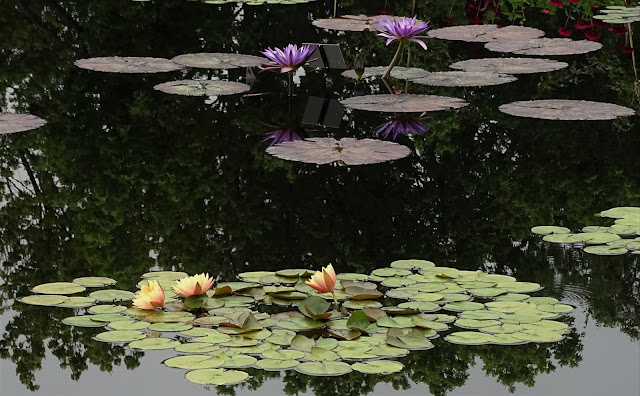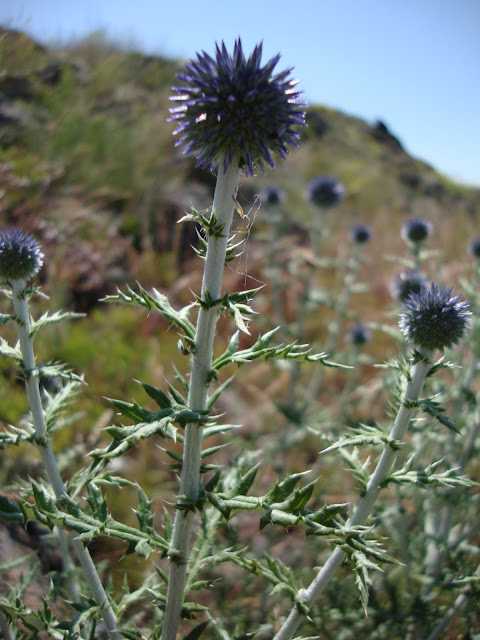Yesterday I strolled Denver Botanic Gardens for a while with John Greenlee and Neil Diboll--two of America's premier plantsmen. It's hard to convey the sort of pleasure that a curator derives from listening to connoisseurs comment favorably on the workplace where you have lavished many decades of love and concern. Both were generous in their observations and praise. One thing that John said that struck me was "there's a heck of a lot of water in this place"...the waterways and ponds and water features are undeniably present: I wish I'd asked him if he meant that having so much in the way of water features was a bad thing. Or if he was referring to the enormous impact that our water gardens have thanks to the abundance, variety and artistry of the plantings of water plants. The Victoria water lilies in particular--positioned strategically in several areas--attract a great deal of interest and fascination.
I think that the simple elegance of water lily foliage, and the calm manner in which it splays on the wide expanses of black water (yes, it's dyed) creates a fabulous counterpoint to the complex and variable flower gardens that the water gardens complement and pass through. And there are the reflections of clouds, and the gardens themselves glimpsed in reverse, as it were in the water gardens. I am mot sure they really occupy more than a fraction of the actual acreage in the Gardens, but their impact far outpaces their physical dimension.
 |
| Agdd caption |




















































